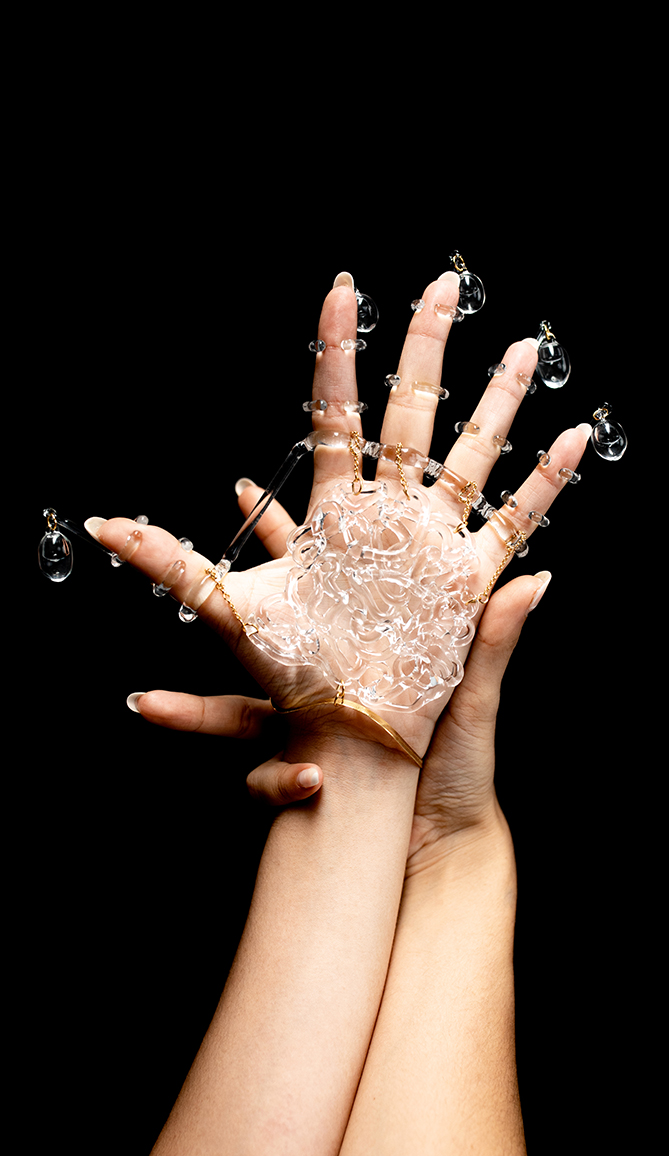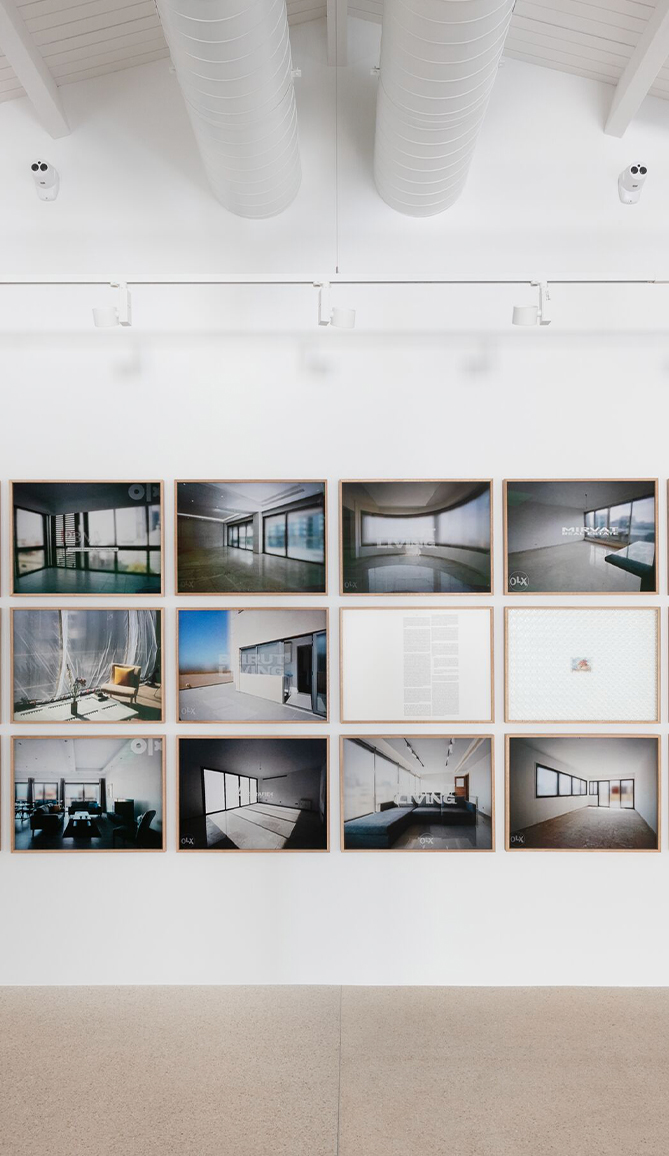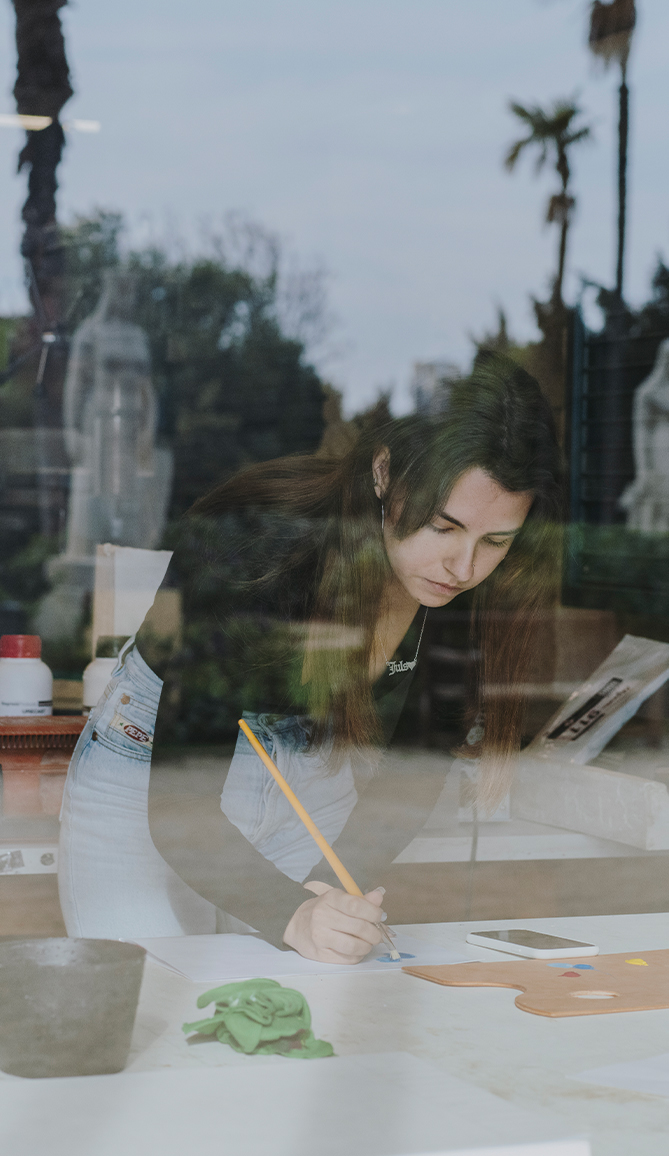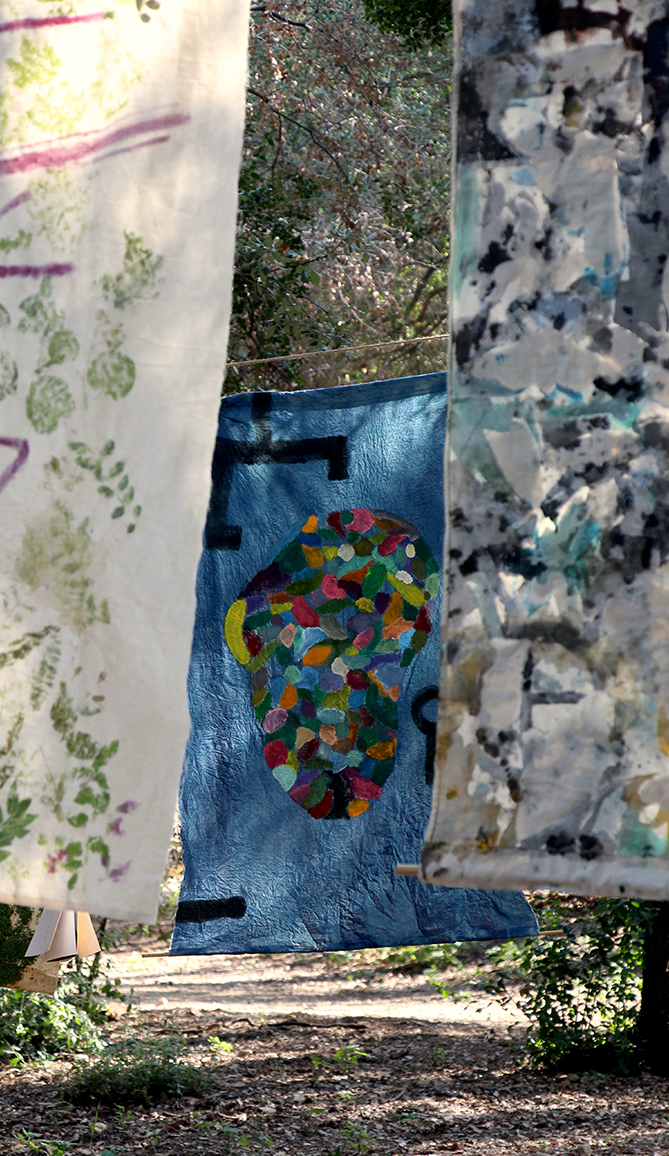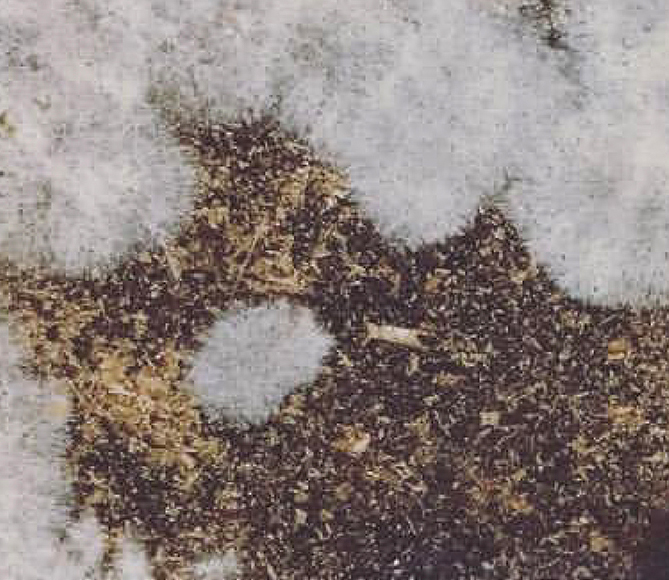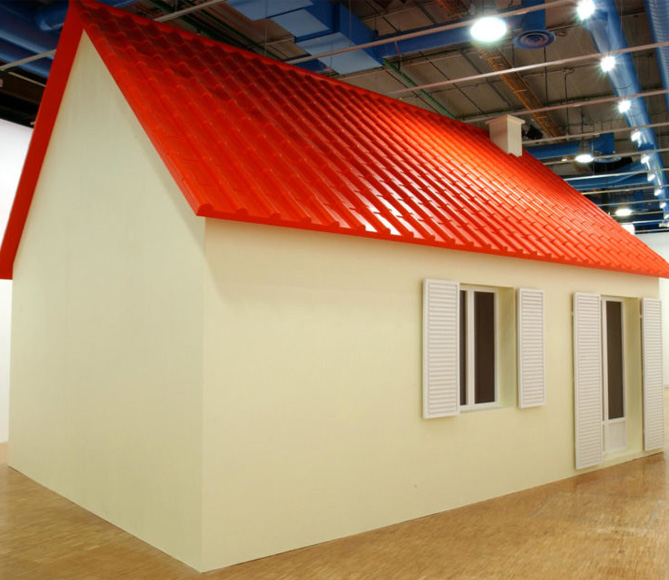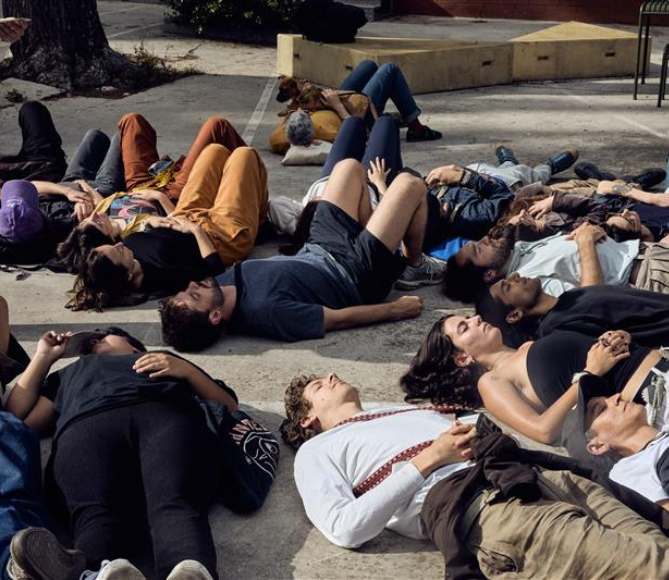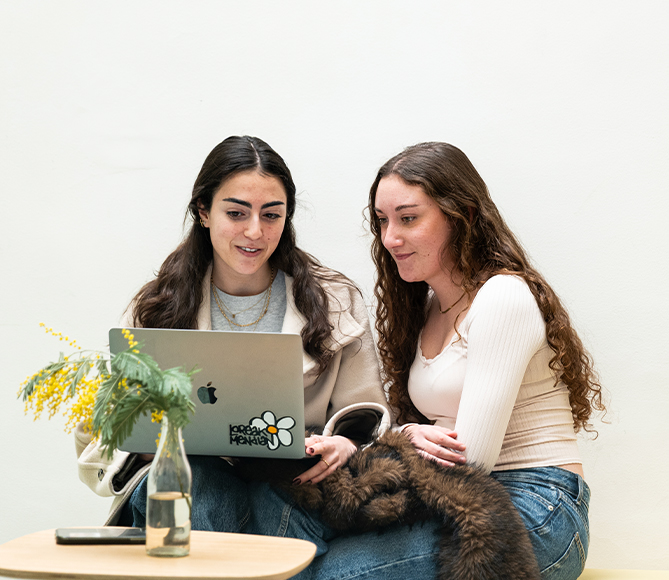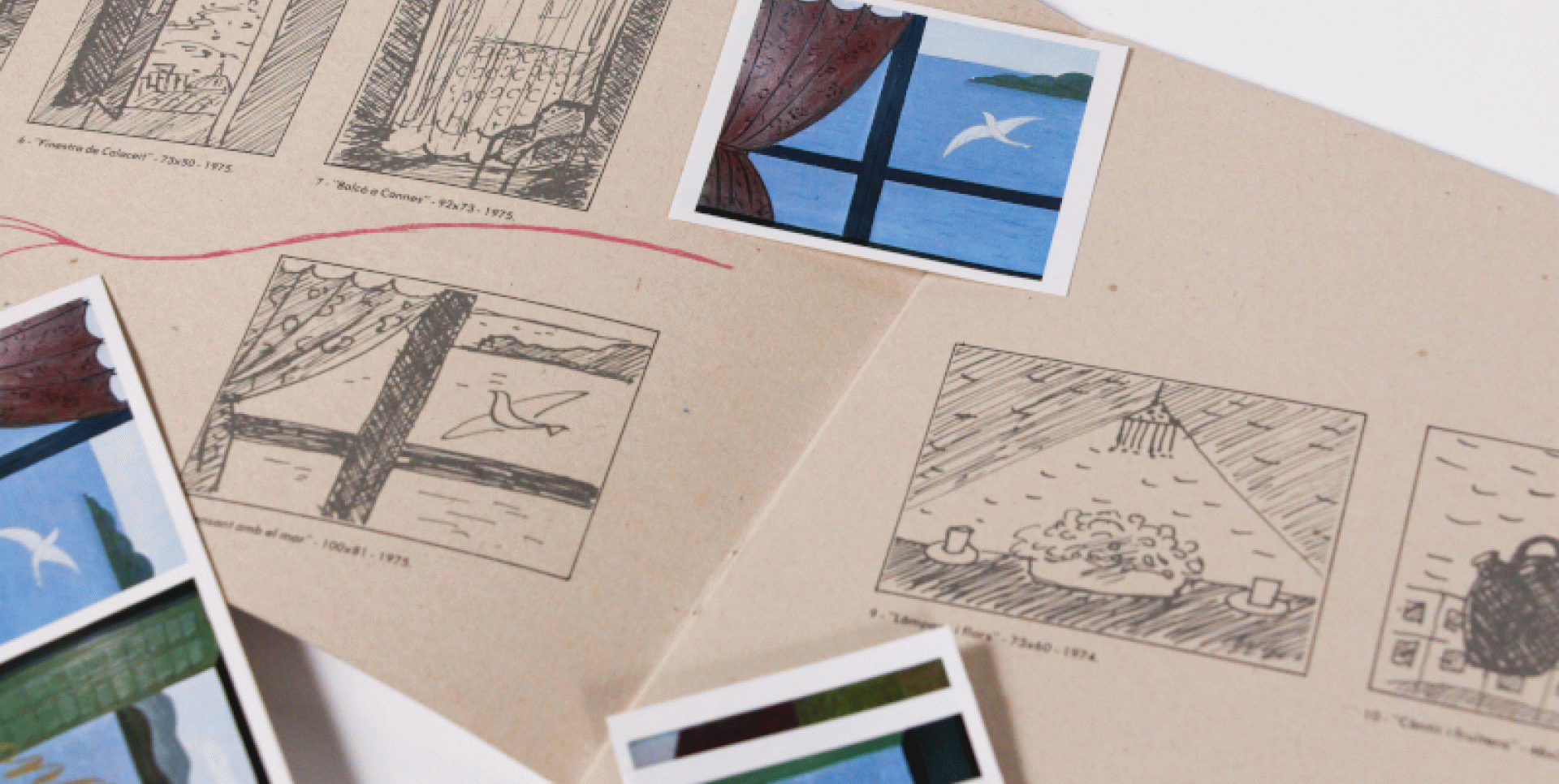Xavier Olivé's donation that has recently entered into the EINA's collection includes a total of five catalogues he designed for exhibitions by Albert Ràfols and Maria Girona held at the Adrià Gallery in Barcelona during the 1970s.
Albert Ràfols Casamada
Catalogue of the 1974 exhibition

This catalogue was designed to give the appearance of a personal portfolio with the name printed in gold lettering on the cover so it looked like it might belong to a senior executive. This is how design was related to the edition for the exhibition of numbered and signed "copies" that Albert Ràfols edited using traditional office file folders. It involved green boxes around thirty centimetres wide that, instead of the traditional alphabetical separations and tabs, contained some of his poems as well as various everyday objects such as a spool of thread, photographs, and postcards, making it a work of conceptual art.

Inside the folder, one could see a rather organized mess: an Adrià Gallery pocket calendar with the dates of the exhibition circled with a marker; personal portfolio format photographs from his studio and the wooden sculptures on display; a torn sheet from a sketchbook; a postcard showing one of the paintings in the exhibition; and typewritten texts by Alexandre Cirici, Ettore Sottsass, and Josep M. Carandell, each corrected by hand, printed on paper, and folded in different ways, referring to the Folded Papers series in the exhibition.
The wooden sculptures on display in the Gallery later became part of EINA's Art Collection. A sculpture was installed on the roof of the first floor of the Torre Dolcet, EINA's first headquarters. Over the years, it was transformed, succulents were planted in it, and it eventually deteriorated, shaping what we could define as a work of Land Art.

The design of the 1974 catalogue by Xavier Olivé received the 1975 Laus Prize for Graphic Design.
Poster/Catalogue of the 1977 exhibition
Albert Ràfols presented a collection of asymmetrically mounted wood paintings. Based on this same concept, and operating on a miniscule budget, two sheets of paper with different colours were used to design the poster/catalogue. By pasting them along the dotted line following the instructions, they were transformed into posters. The introduction text was drafted by Xavier Rubert de Ventós.
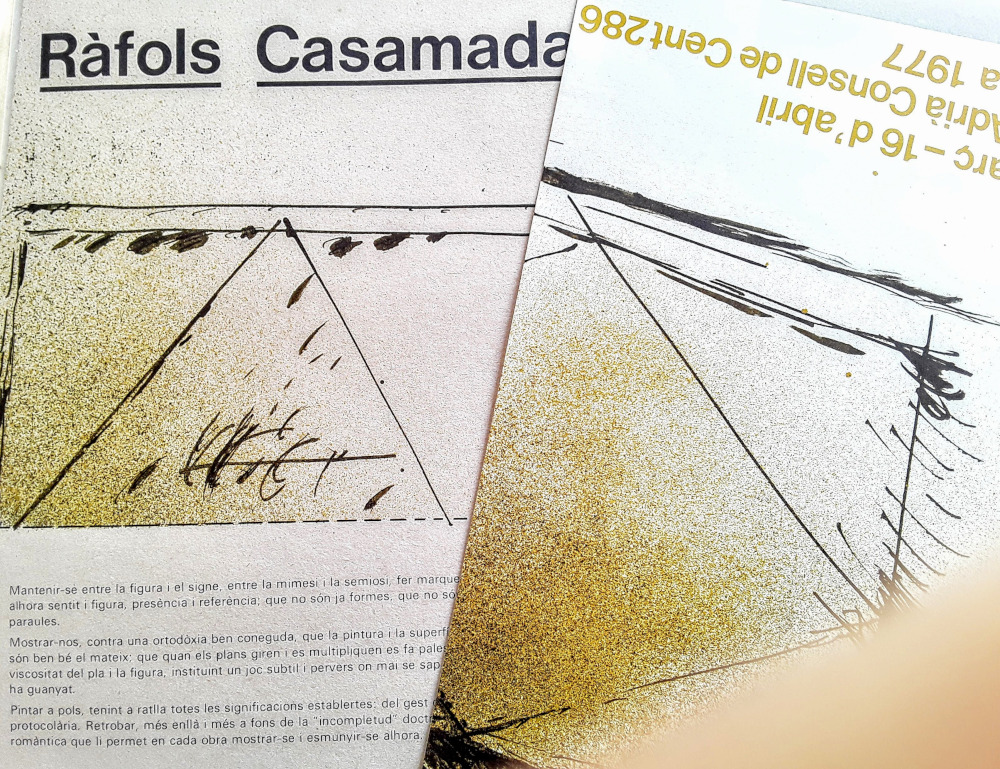

Maria Girona
Catalogue of the 1973 exhibition
The catalogue took the shape of an accordion postcard. The frottage technique was used for the cover, an artistic process of rubbing an uneven surface to reproduce a relief on paper, in this case an old postcard.
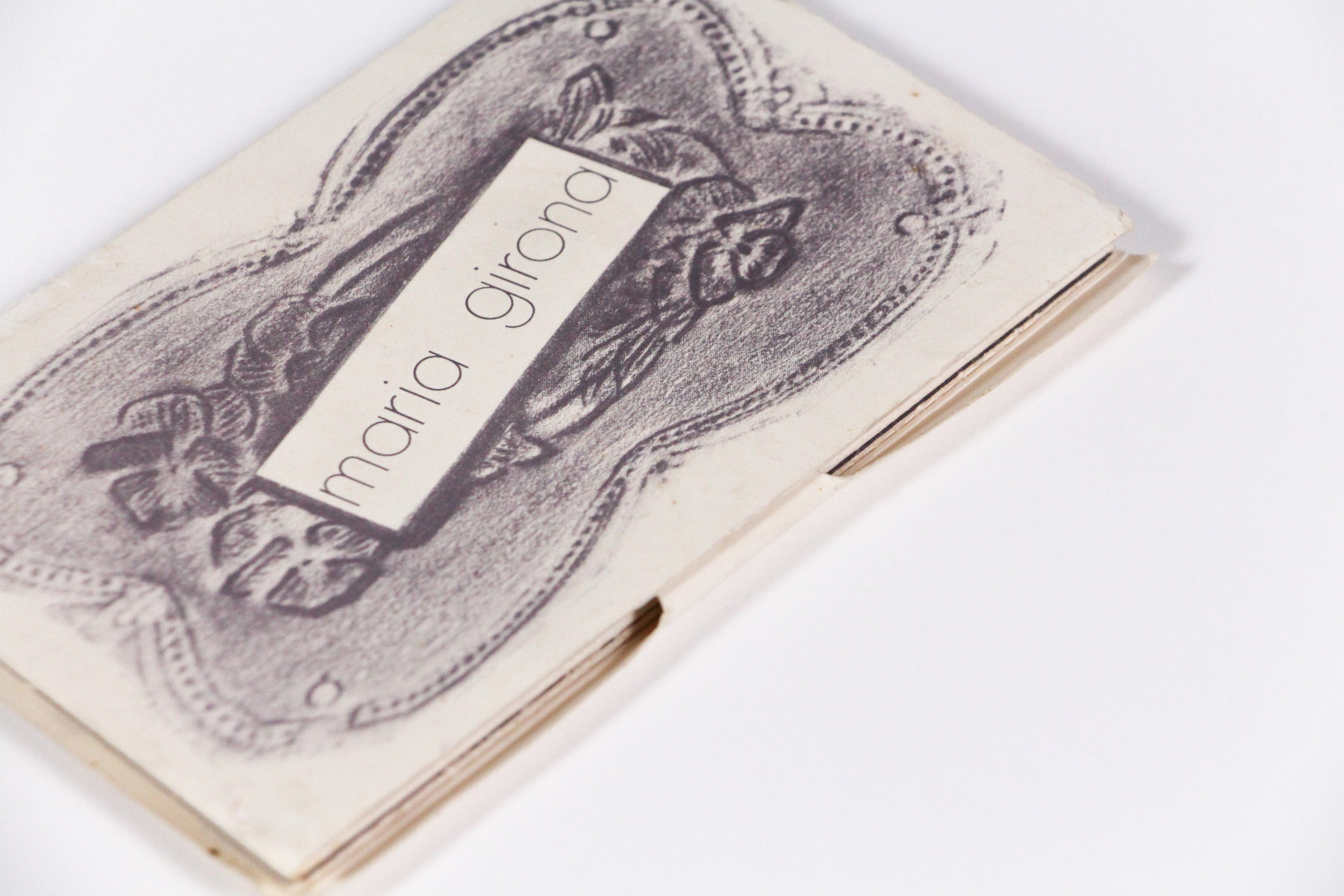

In this exhibition, Maria Girona exhibited paintings, drawings, and various collages. The catalogue shows the process of creating collages in which the artist used different materials evoking the world of cinema, children's trading cards, and decorative borders. The works present a nostalgic vision, sometimes with a certain element of kitsch, also incorporating other everyday items from the era such as theatre and concert tickets, tickets from her travels, or restaurant bills, among others. The piece is bound with naive art imagery.

One of the postcards shows a sketch by Miguel Milá on the design of a fountain made of polyester, a new material, presented first in the exhibition. Some time later, the same fountain along with the sound of water served to create the appropriate atmosphere in the hall within the Torre Dolcet as part of Pere Riera's lecture on the Alhambra in Granada.

Two photographs of the montage were reproduced on another postcard of the Garden transformation project at a 1:1 scale by Maria Girona. In this 1972 installation showcased at the EINA gardens, the artist used old hand-painted paper theatre sets that reproduced fountains, balustrades, and rose bushes that she installed throughout the garden and blended into the natural vegetation.
More information in the EINA chronology.
Album: Maria Girona, catalogue of the 1975 exhibition




As Alexandre Cirici pointed out in the introduction to the catalogue, “her paintings are iconic, images of a familiar world painted in the studio on notes taken from nature.” The catalogue showed the artist's creative process for the first time, including the sketches she made beforehand for each work.

Cirici himself continued, "each collage aims to respond to the stimulus of a found popular image." Xavier Olivé's idea to turn the catalogue into a trading card album arose from these elements highlighted by Cirici.
Illustrated envelope and postcard in 1978
An envelope with a sketch and a postcard drawn with a eucalyptus branch made with coloured pencils by Maria Girona comprise the invitation to the opening of her 1978 exhibition.
Sending the invitations was made possible by the new postal services of the era, enabling personalized envelopes to be sent without a stamp.

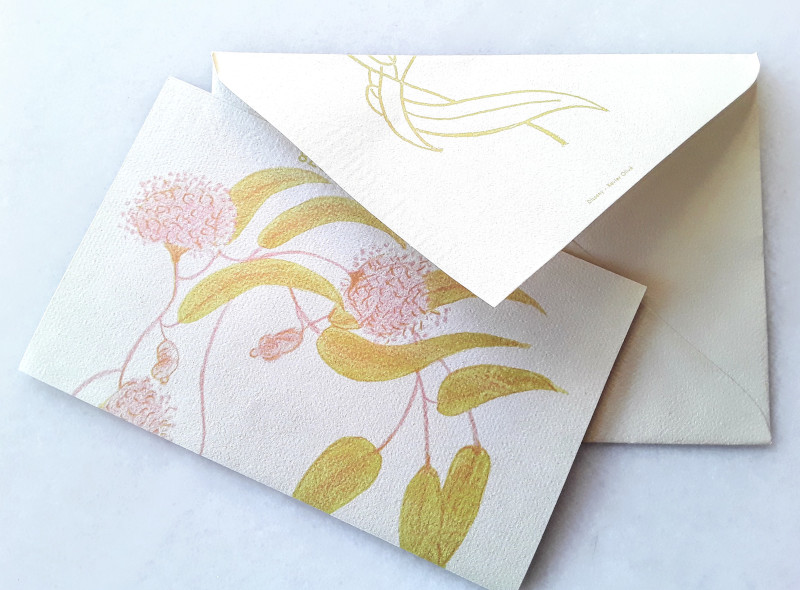
Maria Girona's collage recalls her trip to Austria and Hungary at the end of the 1970s. She sent the collage to Xavier Olivé when he was doing his military service in Cádiz.

The catalogues and the collage were donated by Xavier Olivé to EINA. The catalogues also form part of the Barcelona Design Museum collection. Many of the works exhibited at these exhibitions today are part of the Fundació Carmen i Lluís Bassat Collection.
